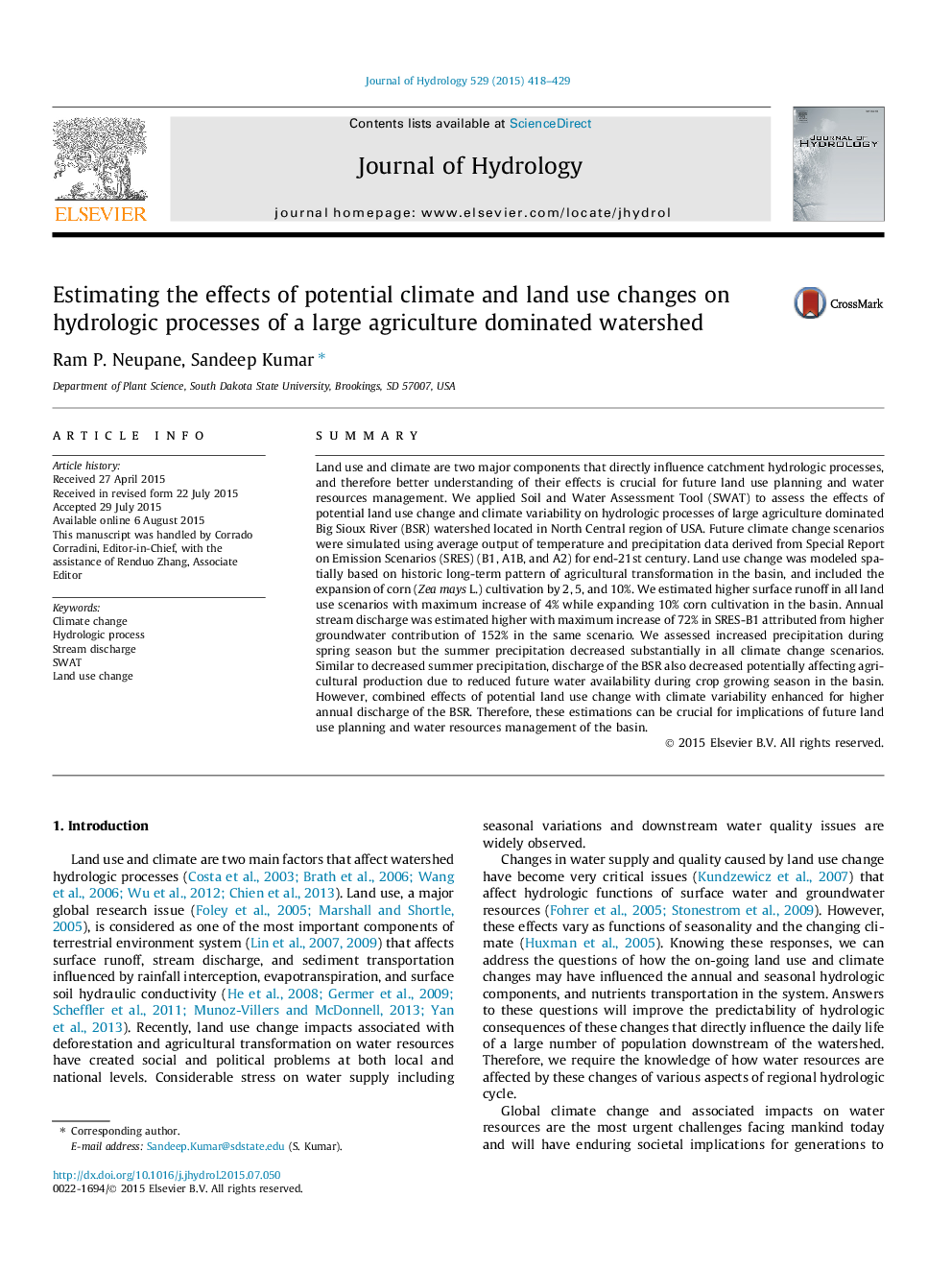| Article ID | Journal | Published Year | Pages | File Type |
|---|---|---|---|---|
| 6411029 | Journal of Hydrology | 2015 | 12 Pages |
•SWAT model was calibrated for a large agriculture dominated watershed.•The model simulated higher surface runoff with increase in corn cultivation.•Land use change and climate variability enhanced for higher annual discharge.
SummaryLand use and climate are two major components that directly influence catchment hydrologic processes, and therefore better understanding of their effects is crucial for future land use planning and water resources management. We applied Soil and Water Assessment Tool (SWAT) to assess the effects of potential land use change and climate variability on hydrologic processes of large agriculture dominated Big Sioux River (BSR) watershed located in North Central region of USA. Future climate change scenarios were simulated using average output of temperature and precipitation data derived from Special Report on Emission Scenarios (SRES) (B1, A1B, and A2) for end-21st century. Land use change was modeled spatially based on historic long-term pattern of agricultural transformation in the basin, and included the expansion of corn (Zea mays L.) cultivation by 2, 5, and 10%. We estimated higher surface runoff in all land use scenarios with maximum increase of 4% while expanding 10% corn cultivation in the basin. Annual stream discharge was estimated higher with maximum increase of 72% in SRES-B1 attributed from higher groundwater contribution of 152% in the same scenario. We assessed increased precipitation during spring season but the summer precipitation decreased substantially in all climate change scenarios. Similar to decreased summer precipitation, discharge of the BSR also decreased potentially affecting agricultural production due to reduced future water availability during crop growing season in the basin. However, combined effects of potential land use change with climate variability enhanced for higher annual discharge of the BSR. Therefore, these estimations can be crucial for implications of future land use planning and water resources management of the basin.
